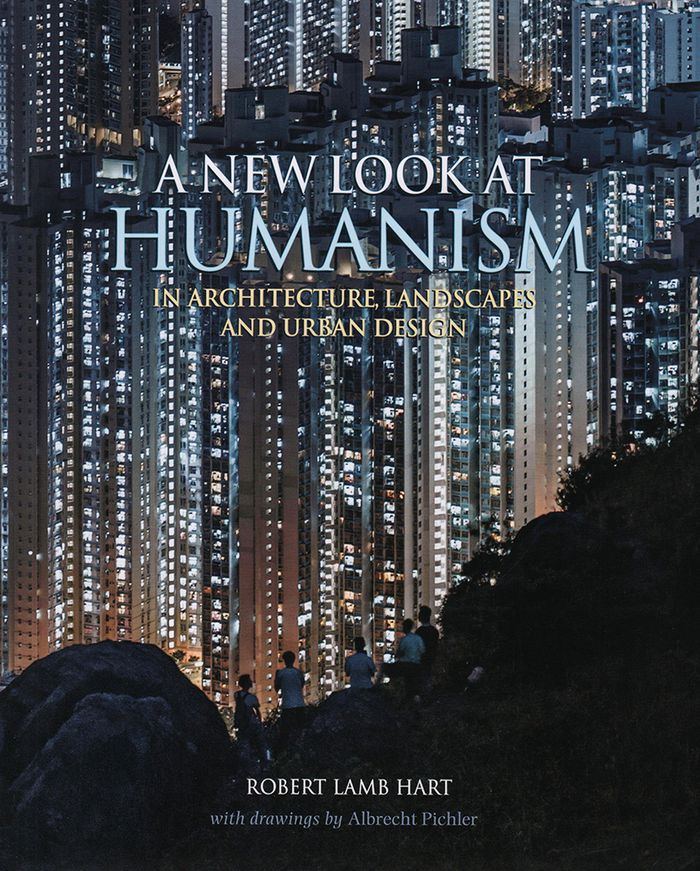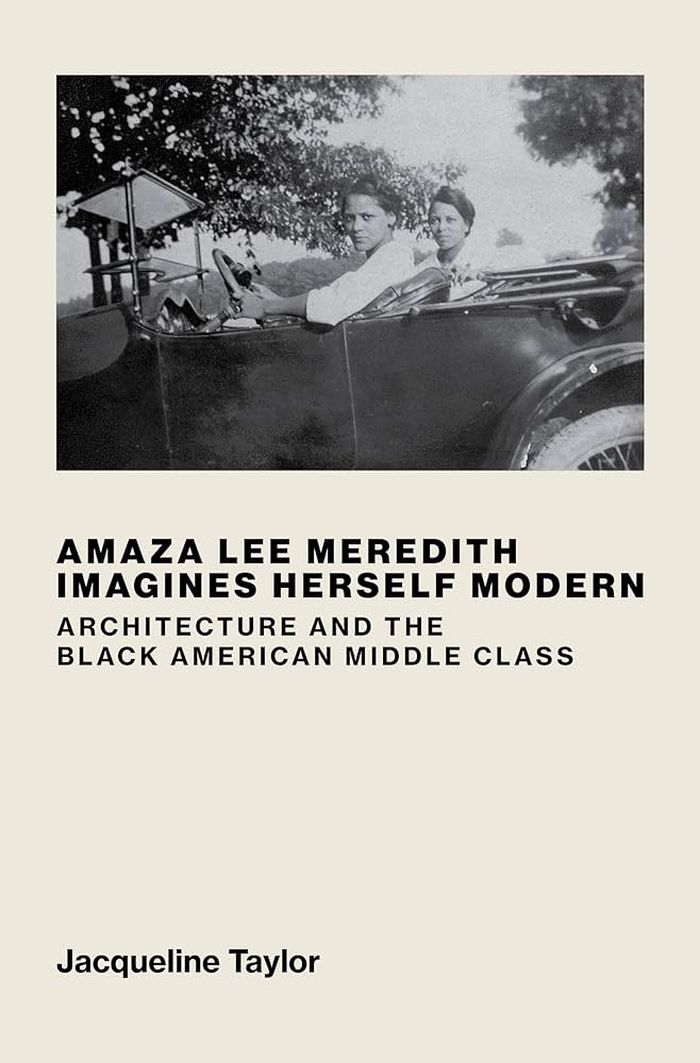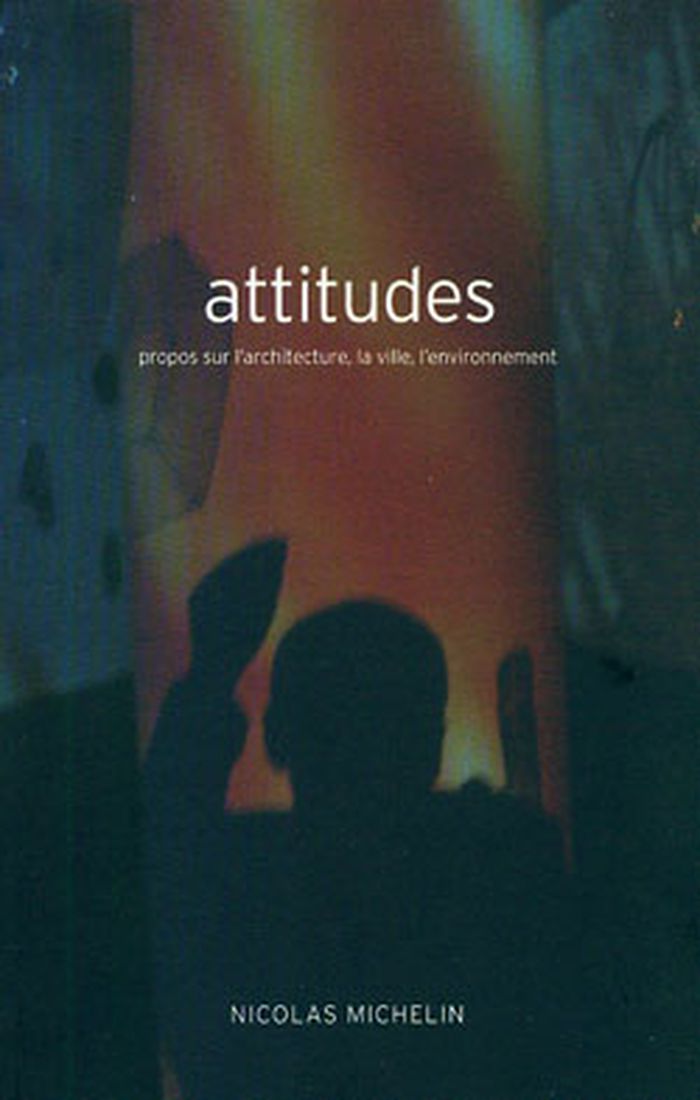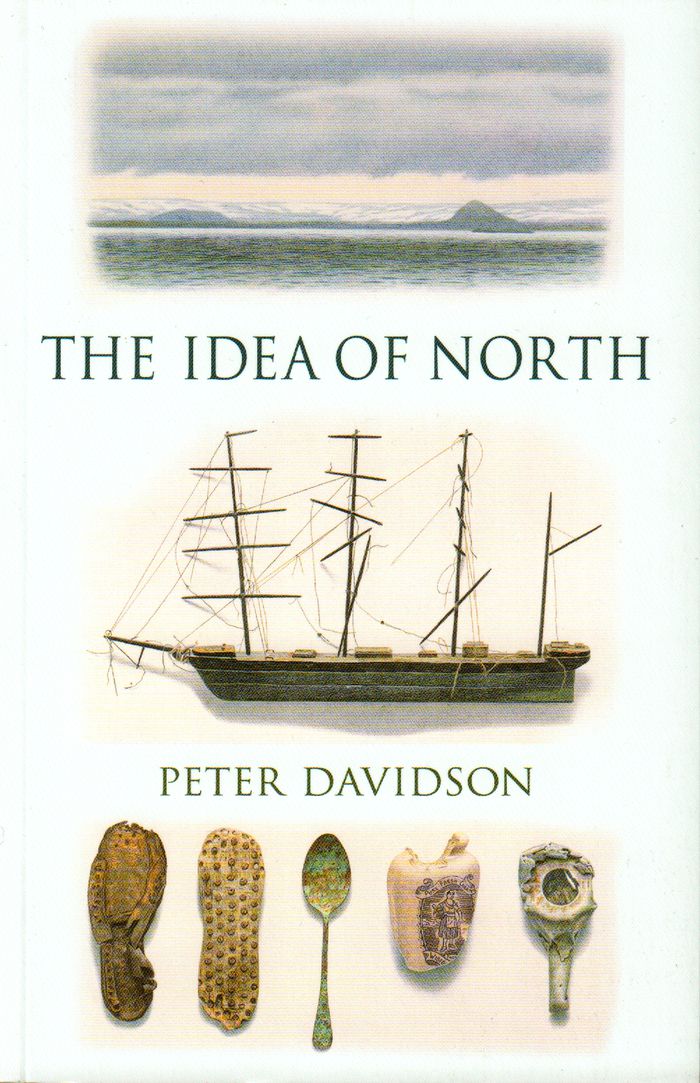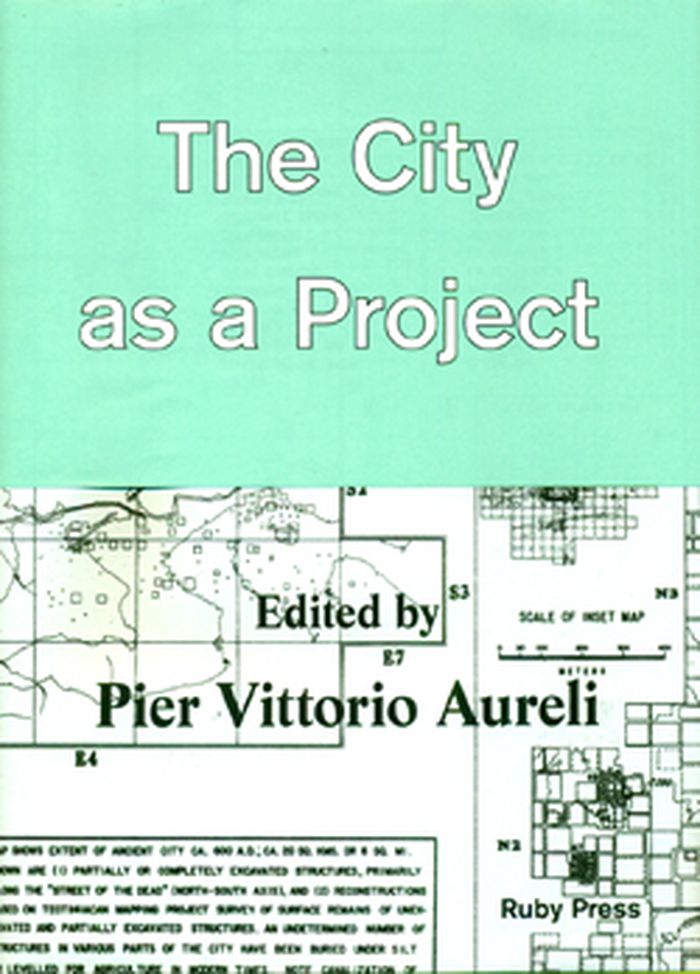$42.00
(available to order)
Summary:
This book is about enlarging the ways designers think about design, doing so by learning more about the maturing sciences of human life-evolution, ecology, and the neurosciences-the sciences that explore how you or I actually experience the places being built for us and why we respond the ways we do. The new insights are as revolutionary in their way as the re-discovery(...)
A new look at humanism: in architecture, landscapes and urban design
Actions:
Price:
$42.00
(available to order)
Summary:
This book is about enlarging the ways designers think about design, doing so by learning more about the maturing sciences of human life-evolution, ecology, and the neurosciences-the sciences that explore how you or I actually experience the places being built for us and why we respond the ways we do. The new insights are as revolutionary in their way as the re-discovery of ancient Greece and Rome by humanists in the Renaissance. That was a time of dazzling creativity, with new ways of thinking about human nature. We're facing that kind of opportunity again. The book starts with our "Origins" as we evolved, immersed in the natural world. Then our actual experience is explored in "The mind that encounters architecture" and "The body that responds." And then "the languages of humanism" applies these ideas to design and the role of aesthetic experience.
Architectural Theory
books
$32.95
(available to order)
Summary:
This ambitious collection treating the Italian Fascists’ appropriation of the past for political purposes focuses on the role of the visual in the aim of fusing the past and the modern world in Mussolini’s Italy. With contributions by art historians and classicists, literary and intellectual historians, "Donatello among the Blackshirts" demonstrates that the Fascist(...)
Architectural Theory
September 2004, Ithaca
Donatello and the Blackshirts : history and modernity in the visual culture of fascist Italy
Actions:
Price:
$32.95
(available to order)
Summary:
This ambitious collection treating the Italian Fascists’ appropriation of the past for political purposes focuses on the role of the visual in the aim of fusing the past and the modern world in Mussolini’s Italy. With contributions by art historians and classicists, literary and intellectual historians, "Donatello among the Blackshirts" demonstrates that the Fascist regime appropriated not only Italy’s ancient Roman past but also the medieval, Renaissance, and even baroque eras, as well as its own recent history, in constructing a new myth of the nation. Every aspect of visual culture—from monumental architecture, sculpture, painting, and gardens to exhibitions, spectacles, films, medals, household items, and stamps—helped to link the past with modernity. As a result, Italy’s artistic traditions became familiar to all social classes throughout the peninsula. While this richly illustrated book concerns Fascist Italy, at the same time it also shows how Italy’s premodern artistic traditions have been passed down to the present through the filter of the Fascist era.
books
September 2004, Ithaca
Architectural Theory
books
The spaces between buildings
$33.95
(available to order)
Summary:
Ford begins by looking at the growth of four urban places, each representing a historical era as much as a geographic location: the Islamic medina; the city shaped by the Spanish renaissance; the nineteenth-century North American city; and the twentieth-century American city. His first(...)
The spaces between buildings
Actions:
Price:
$33.95
(available to order)
Summary:
Ford begins by looking at the growth of four urban places, each representing a historical era as much as a geographic location: the Islamic medina; the city shaped by the Spanish renaissance; the nineteenth-century North American city; and the twentieth-century American city. His first essay also discusses the evolution of the free-standing structure as a basic urban building type and the problems encountered in beautifying the often work-a-day back and side yards that have helped to create the image of the untidy American city. The second essay examines the urban trend toward viewing lawns, gardens, hedges, and trees as an essential adjunct to architecture. The final essay focuses on pedestrian and vehicular spaces. Here the author includes the landscape of the garage, sidewalks, streets, and alleys. In its exploration of how spaces become places, "The Spaces between Buildings" invites readers to see anew the spaces they encounter every day and often take for granted.
books
August 2000, Baltimore
Architectural Theory
$53.95
(available to order)
Summary:
''Amaza Lee Meredith imagines herself modern'' tells the captivating story of Amaza Lee Meredith, a Black woman architect, artist, and educator born into the Jim Crow South, whose bold choices in both life and architecture expand our understanding of the Great Migration and the Harlem Renaissance, while revealing the importance of architecture as a force in Black(...)
Amaza Lee Meredith imagines herself modern: Architecture and the Black Amercian middle class
Actions:
Price:
$53.95
(available to order)
Summary:
''Amaza Lee Meredith imagines herself modern'' tells the captivating story of Amaza Lee Meredith, a Black woman architect, artist, and educator born into the Jim Crow South, whose bold choices in both life and architecture expand our understanding of the Great Migration and the Harlem Renaissance, while revealing the importance of architecture as a force in Black middle-class identity. Through her charismatic protagonist, Jacqueline Taylor derives new insights into the experiences of Black women at the forefront of culture in early twentieth-century America, caught between expectation and ambition, responsibility and desire. Central to Taylor’s argument is that Meredith’s response to modern architecture and art, like those of other Black cultural producers, was not marginal to the modernist project; instead, her work reveals the tensions and inconsistencies in how American modernism has been defined. In this way, the book shines a necessary light on modernism’s complexity, while overturning perceived notions of race and gender in relation to the modernist project and challenging the notion of the white male hero of modern architecture.
Architectural Theory
$32.95
(available to order)
Summary:
La désobéissance inventive, ou la nécessité de faire autrement. C'est ce que recommande Nicolas Michelin, architecte urbaniste, dans ces nouveaux textes. C'est-à-dire sortir de la routine, contourner les objectifs réglementaires incertains ou absurdes, éviter les alibis environnementaux douteux, pour échapper au carcan qui uniformise la production architecturale actuelle.(...)
Attitudes ; propos sur l'architecture, la ville, l'environnement
Actions:
Price:
$32.95
(available to order)
Summary:
La désobéissance inventive, ou la nécessité de faire autrement. C'est ce que recommande Nicolas Michelin, architecte urbaniste, dans ces nouveaux textes. C'est-à-dire sortir de la routine, contourner les objectifs réglementaires incertains ou absurdes, éviter les alibis environnementaux douteux, pour échapper au carcan qui uniformise la production architecturale actuelle. Mais, Nicolas Michelin fait soudain un pas de côté. De manière inattendue, il livre quatre courtes fictions qui entraînent le lecteur dans d'étranges univers, incursions dans des mondes parallèles où l'architecture apparaît toujours en filigrane. À partir de constructions ou de paysages réels, il glisse vers des hallucinations dans des temporalités et des spatialités étrangement subverties. Puis, il mène trois conversations avec des interlocuteurs proches de son mode de pensée. Il échange avec ses deux associés sur la pratique de l'agence sur la double échelle, de l'urbanisme et de l'architecture. Il partage sa parole avec un artiste, à propos de la Renaissance, et s'interroge avec deux architectes plus jeunes sur la notion d'engagement. Au fil de ces textes, il explicite sa position d'architecte et sa vision de ce métier politique.
Architectural Theory
books
$100.00
(available to order)
Summary:
The only full treatise on architecture and its related arts to survive from classical antiquity, the "Architectura libri decem" ("Ten Books of Architecture") is the (...)
Vitruvius : Ten books on architecture
Actions:
Price:
$100.00
(available to order)
Summary:
The only full treatise on architecture and its related arts to survive from classical antiquity, the "Architectura libri decem" ("Ten Books of Architecture") is the single most important work of architectural history in the Western world, having shaped humanist architecture and the image of the architect from the Renaissance to the present. Extremely influential in the formation of the medieval and modern concept of a broad liberal arts education as the basis for responsible professionals, this work is remarkable also because over half of its content deals with aspects of Hellenistic art, science, and technology, music theory, law, artillery, siege machinery, proportion and philosophy, among other topics. This new, critical edition of Vitruvius' "Ten Books of Architecture" is the first to be published for an English-language audience in more than half a century.
books
August 1999, Cambridge
Treatises
books
$31.95
(available in store)
Summary:
Et si la perspective moderne n'existait pas? Ne faut-il nuancer la thèse massivement admise qu'au Quattrocento, un dispositif unitaire de représentation se mettrait en place dans la peinture, dont la fonction demeurerait inchangée jusqu'à l'âge classique? En relisant les textes d'Alberti, de Piero della Francesca, de Léonard de Vinci et d'Albert Dürer, en regardant(...)
Archéologie de la perspective : sur Piero della Francesca, Vinci et Dürer
Actions:
Price:
$31.95
(available in store)
Summary:
Et si la perspective moderne n'existait pas? Ne faut-il nuancer la thèse massivement admise qu'au Quattrocento, un dispositif unitaire de représentation se mettrait en place dans la peinture, dont la fonction demeurerait inchangée jusqu'à l'âge classique? En relisant les textes d'Alberti, de Piero della Francesca, de Léonard de Vinci et d'Albert Dürer, en regardant autrement les peintures de la Renaissance, des fresques d'Azzero ou dela Cène de Milan, ce livre met en effet en évidence des dispositifs singuliers, liés pour chaque peintre à des régimes différents de la représentation, du visible, de la vision et du regard. Pourtant, au XVIIe siècle, le discours sur la perspective est soudain convoqué par la philosophie, pour éclairer le nouveau partage entre la représentation du sujet pensant et une matière désormais géométrisable. À quelles conditions, improbables et contingentes, la perspective a-t-elle pu tenir cette place à la fois décisive et ambiguë dans l'émergence de l'âme classique? Par quelles transformations, de la surface de la peinture et de laplace du spectateur, a-t-elle dû passer pour rendre possible la clôture de l'image sur la représentation classique? À l'histoire d'une forme symbolique, ce livre substitue le récit désormais éclaté d'une archéologie ou d'une généalogie de la modernité.
books
May 2007, Paris
Architectural Theory
$31.00
(available to order)
Summary:
As with the compass needle, so people have always been most powerfully attracted northwards; everyone carries within them their own concept of north. The Idea of North is a study, ranging widely in time and place, of some of the ways in which these ideas have found expression. Peter Davidson explores the topography of north as represented in images and literature, taking(...)
The idea of north, 2nd edition
Actions:
Price:
$31.00
(available to order)
Summary:
As with the compass needle, so people have always been most powerfully attracted northwards; everyone carries within them their own concept of north. The Idea of North is a study, ranging widely in time and place, of some of the ways in which these ideas have found expression. Peter Davidson explores the topography of north as represented in images and literature, taking in Netherlandic winter paintings of the Renaissance, German Romantic landscapes, Scandinavian Biedermeyer and twentieth-century topographical painting and printmaking. He examines a bewildering diversity of mythologies and imaginings of north, including The Snow Queen; Scandinavian Sagas; ghost-stories; Moomintrolls, Arctic exploration; the fictitious snowy kingdoms of Zembla and Naboland; Nabokov's nostalgias; Baltic midsummer; rooms in winter light; compasses and star-stones; hoar-frost; ice; and glass. The book also traces a northward journey, describing northern rural England, industrial sites, and the long emptiness of the borders, Scotland and the Highlands. He looks at the region far north of Scotland, then moves to the Northern Netherlands and Scandinavia to explore their identifiable northernness.The last visited place is Iceland, identified by W. H. Auden and Louis McNeice in 1936 as 'furthest, most remote, most distant, most northerly'. An engaging meditation on solitude, absence and stillness, The Idea of North shows north to be a goal rather than a destination, a place of revelation that is always somewhere ultimate and austere.
Architectural Theory
The city as a project
$41.95
(available to order)
Summary:
What if the city can be seen differently than as a sort of self-organising chaos? Shaped not only by material forces, but also by cultural and didactic visions, the city may instead result from political intention in the form of architectural projects. This collection of eight essays, edited by Pier Vittorio Aureli, examines a fascinating set of urban conditions across(...)
The city as a project
Actions:
Price:
$41.95
(available to order)
Summary:
What if the city can be seen differently than as a sort of self-organising chaos? Shaped not only by material forces, but also by cultural and didactic visions, the city may instead result from political intention in the form of architectural projects. This collection of eight essays, edited by Pier Vittorio Aureli, examines a fascinating set of urban conditions across more than two millennia of history, from the political theology of the Islamic city to the political economy of Renaissance architecture, and from the planned Mesoamerican metropolis to the Fordist factory floor, revealing the ways in which the city arises from the constant interaction between ideas and spatial conditions.
Urban Theory
$41.95
(available to order)
Summary:
Notre habitation, notre habitat, l'espace où nous évoluons est un médium que nous croyons façonner selon notre désir, selon l'image que nous voulons donner de nous-même selon notre ego. En fait, il restitue nos craintes et nos joies, qui ressurgissent du plus lointain de notre mémoire génétique. Notre habitation n'est que le reflet de nous-mêmes. Ce n'est pas seulement(...)
Les origines symboliques de notre habitat
Actions:
Price:
$41.95
(available to order)
Summary:
Notre habitation, notre habitat, l'espace où nous évoluons est un médium que nous croyons façonner selon notre désir, selon l'image que nous voulons donner de nous-même selon notre ego. En fait, il restitue nos craintes et nos joies, qui ressurgissent du plus lointain de notre mémoire génétique. Notre habitation n'est que le reflet de nous-mêmes. Ce n'est pas seulement l'architecture sacrée qui véhicule des symboles mais la plus simple demeure reflète aussi des archétypes qui proviennent de la tradition primordiale. Des premières croyances humaines pour les déesses mères, comme Gaia, la terre nourricière jusqu'à la Sophia, la sagesse grecque. vénérée encore par les hermétistes de la Renaissance, la lignée ininterrompue des bâtisseurs qui ont construit selon les principes de la géométrie sacrée, du mythe osirien au corpus hermeticum, issu de l'Hermès trismégiste, il y a eu un fil conducteur pour que l'union du ciel et de la terre puisse se réaliser. Il y a eu une transmission du savoir de constructeurs initiés, qui n'ont cessé, à travers des civilisations très éloignées, semble-t-il, les unes des autres, de rassembler ce qui était épars, qui nous vient encore de la nature et qui n'a pas été inventé par l'homme mais seulement réappris et réutilisé. Suivons l'auteur à la découverte de nos racines profondes et dont le développement s'est fait identiquement et analogiquement à celles de l'Asie, de l'Orient ou du Nouveau Monde.
Architectural Theory
